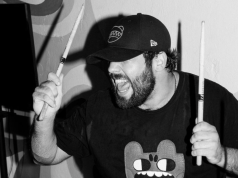For a young, up-and-coming musician, exposure is a gold mine. The fight to triumph over social media algorithms and streaming service loopholes is an ongoing battle that tests the resolve of millions of artists. Music is a digital industry dictated by numbers on a screen and connections behind closed doors – with neither of these things in your favor, all that’s left is the hope that your talent is enough to get you there eventually.
Most artists aren’t even getting paid to put themselves out there. Even if your song blows up today and gets a million plays on Spotify or Apple Music, the bulk of the revenue goes to licensing and rights holders. Whatever’s left over isn’t that much.
Live performance can act as a saving grace. For as long as music has had an audience, performance remains the most organic way for an artist to turn bystanders into dedicated followers. Whether it results in financial gain, heightened exposure, or both, performing is an essential part of sustainability and growth as an artist.
This past October was host to one of South Florida’s most celebrated incubators for musical performance: the III Points Music Festival.
Since its launch in Miami in 2015, III Points has been a hotbed not just for household names in the music industry, but also for local acts who are hungry to increase their outreach. Every year’s lineup is an extensive, motley collection of sounds and genres; for every name you might recognize, there are two or three you’ve never seen before.
This year’s festival featured a total of 11 stages of different sizes with anything from DJ sets to big bands in front of multicolored overlays and towering speakers. That sort of kid-in-the-candy-shop type dynamic for attendees invites an audience that’s open to sitting through sets from acts they’re not too familiar with. Local artists thrive off of this.
Miami rapper Roc Chamberlin, 22, felt more than fulfilled by the outcome of his set on day one at the Main Frame stage. With a team of emcees and dancers, Chamberlin fully embraced his inaugural III Points performance. As an emergent artist, his set preceded the likes of juggernauts like Freddie Gibbs and Kenny Beats, so his perspective was much less about drawing the biggest crowd, and more about making the most of what he got.
“That was the biggest stage we’ve ever been on,” he said, “so just seeing the festival goers slowly come in as they were seeing what was going on and what we were doing was really a cool feeling. There were some people who didn’t necessarily know who I was, but passing by they were able to connect with what I was doing, or whatever my team and I were doing.”
Chamberlin relished the prospect of being a magnet for unsuspecting passersby, and being able to attract unexpected attention is a huge upside for local artists like himself who are given a large platform. He sees III Points as “the best [event] in Miami for local artists” because the split between local acts and established mainstream acts allows for exposure to such a wide audience.
Still, he feels as though there were even more local acts that were deserving of the platform he earned at the festival. Another artist who shares this sentiment is 23-year-old fellow Miami native ILikeBloo, a friend of Chamberlin who had the Main Frame’s first performance of day one.
Bloo is a luring socialite who seems to be virtually ubiquitous within Miami’s alternative scene. A very close friend and collaborator of his is Phoenix James, a 19-year-old singer whose III Points performance on day two featured a guest appearance from Bloo himself. James’ commanding, poignant stage presence drew considerable attention from spectators, and her performance shed light on her potential as a star of tomorrow.
Although he maintained gratitude for his and James’ placements as performers, Bloo was critical of being placed at such an early timeframe, with his set beginning at 4:00 and James’ at 6:00 the next day. He believes that III Points should place even more priority for local talent in favor of bigger names that may not hold their placement to the same regard.
“I understand a festival is a money-making business,” Bloo said. “You want to put the people who are later who are gonna draw more of a crowd. However, if you think of it as an investment and put Phoenix on at midnight, next year Phoenix is gonna draw a way larger crowd than this lame [artist] who just has a bigger name right now.”
It’s a bold argument to make, but he believes that this mindset could make III Points even more respected by locals, and the artists that would benefit from this would be eternally grateful for being put on.
Considering the lack of an audience during early sets, growing artists like Bloo may feel slighted for not getting the chance to prove themselves to more attendees. The time they get to gain exposure is crucial, and feeling it go to waste may very well be counterproductive.
Essentially, the perspective you hold is paramount. At III Points’ yearly Open House, artists compete for the chance of performing at the festival alongside all the heavy hitters. What they do with the spot they earn is completely in their hands.
Few artists are chosen, but each has the opportunity to make a lasting impact. No matter who’s there to watch, that performance could be the one to change your life.
































